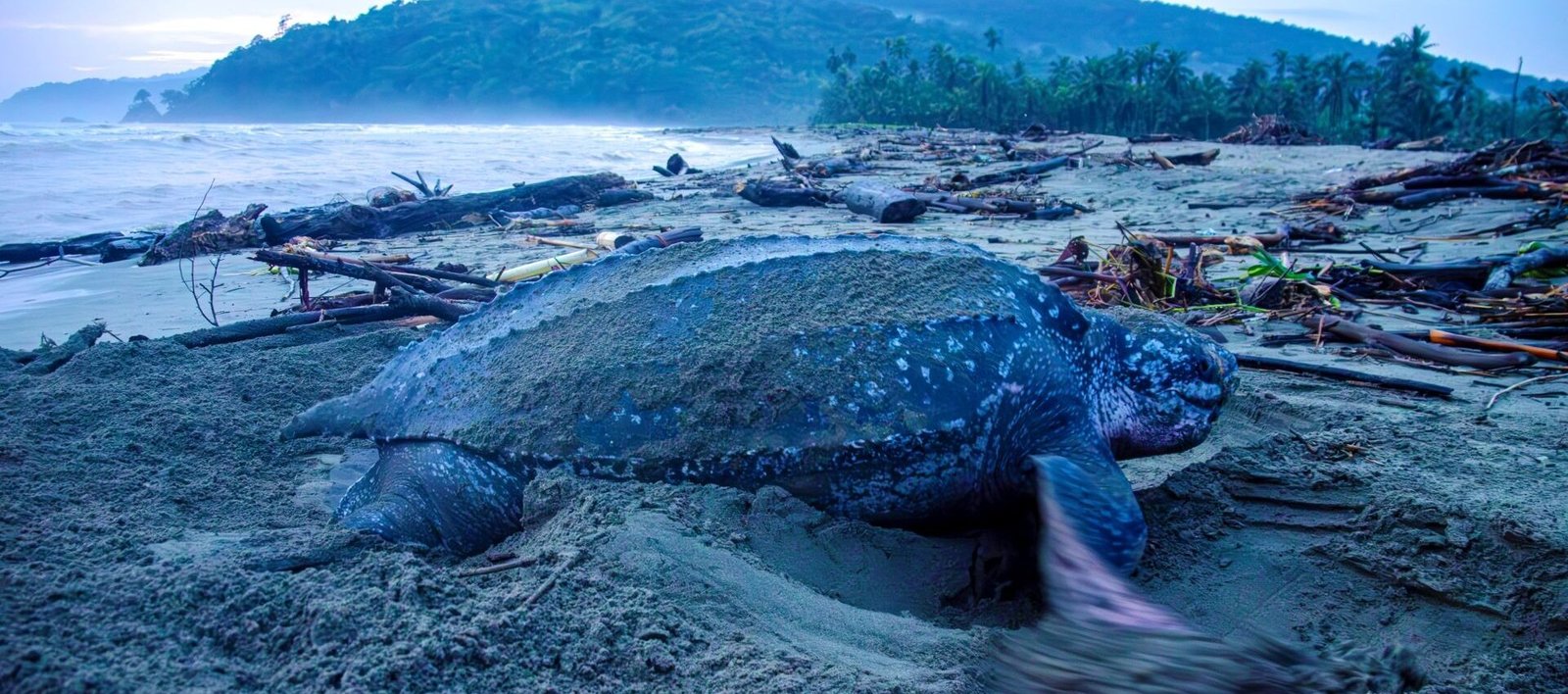
Sea Turtles: A Panamanian Natural Treasure
Texts and Photos: Javier A. Pinzón
In Panama, communities and organizations are protecting sea turtles. From Chiriquí to Guna Yala, their efforts focus on preserving nests, releasing hatchlings, and educating people about the importance of these species.
Sea turtles have had a special place in my life. Even as far back as the days of my B.A. thesis in biology, I knew that they would be a key element of my bond with nature. I worked with highly experienced scientists, but also alongside steadfast volunteers, like Anna González at Playa Malena, who lead community efforts to protect these species. On Playa Malena, the number of nests protected by the González family increased from 5,000 in. 2001 to 48,000 last year, with more than
41,000 turtles released into the ocean. Watching the arrival of the first females released years ago was a milestone for the community.
Malena Beach
I took my daughter to Playa Malena for her first turtle release experience, hoping to pass my deep connection with turtles down to her. Guided by Anna, she saw how these tiny creatures soldiered down the beach to the sea. Although we didn’t get to watch a mother laying eggs that time, we were determined to come back in hopes of seeing it. We had our chance last October on Isla Cañas, during a downpour that was softened only by the broad smiles of Kenni and Eduardo, the community guides who accompanied us.
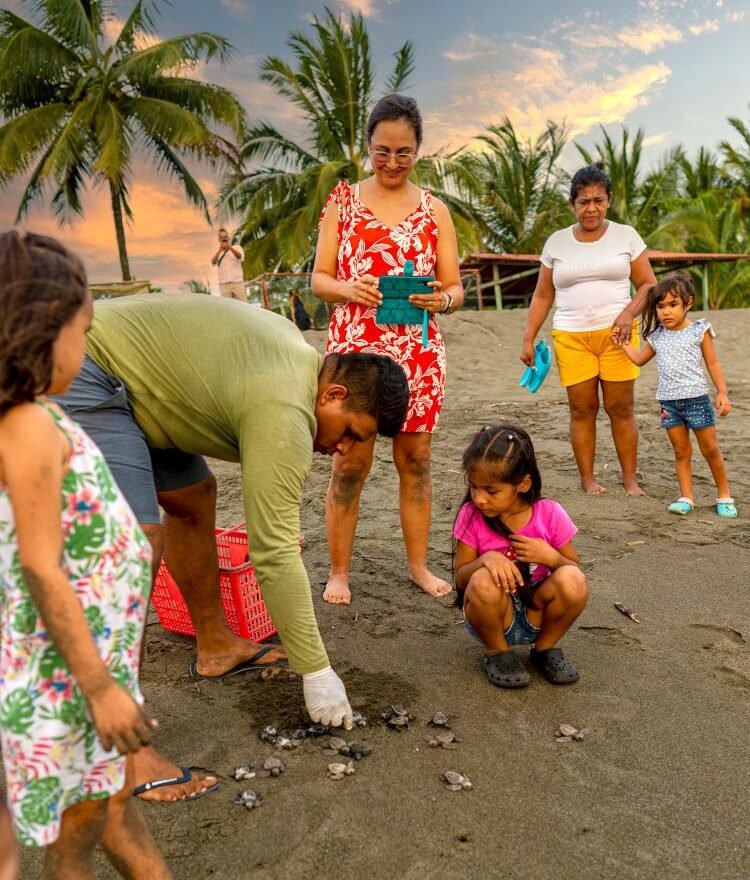

The streets were completely flooded, but the community was prepared with picturesque carts that served as both transportation and shelter. The tour started in a mangrove forest, where we learned that the flowers around us are a food source for the bees whose honey is sustainably harvested. In the afternoon we went to the nursery to spend time with newborn turtles and help release them while battling the wind and the rain.
Isla Cañas
Not only can visitors to Isla Cañas release hatchlings, they can witness a singular phenomenon: the mass nesting of olive ridley sea turtles. Thousands of females simultaneously scramble up the beaches of Isla Cañas and Playa La Marinera (both in Los Santos) to lay their eggs. In just a few days, from 5,000 to 20,000 turtles transform the sand into a portrait of life in movement. This rare spectacle links Panama with other special destinations: Ostional and Nancite in Costa Rica; La Escobilla and Ixtapilla in México; and Chacocente and La Flor in Nicaragua, along with three sites in India. Cañas had not seen any mass arrivals yet this year, so we were on alert for the call to come at the first sign of activity.
At night we enjoyed a home-style supper at El Ranchón restaurant and waited in vain for the rain to let up. The possibility of coming across a mother laying her eggs was sufficient encouragement to grab our raincoats and climb into the cart. Our guide, Eduardo, humorously dubbed the excursion the “Rain Tor-Tour.” We were excited by the first signs of turtles on the beach. We crisscrossed the sand until we finally came upon a mother slowly clambering up the beach. We waited a while, not approaching until she started to dig. My daughter watched in silence as the turtle deposited her eggs and then carefully covered the nest. The turtle went from side to side, using her shell to audibly pat down the sand, which she then scattered to camouflage the nest before heading back toward the water. My daughter named this process “the turtle dance.” It was an emotional moment that she will undoubtedly remember for the rest of her life.
These experiences offer more than mere excitement – they are also educational. Panama’s location between two oceans means it is home to five of the seven species of sea turtles: leatherback, hawksbill, green, olive ridley, and loggerhead. Each one plays a significant role in the marine ecosystem. Some, like the hawksbill, help maintain the coral reefs by feeding on sponges; others, like the green, promote the regeneration of sea grass beds. Though the turtles are important, they face many threats, including poaching, plastic pollution, and the effects of climate change.


Not far away lies Playa Venao, where dazzling sunshine kept us company. We realized that light pollution and the hubbub of restaurants and hotels disorient the turtles, presenting a challenge to their preservation. But we also met leader willing to keep up the fight. The “Save The Turtles Playa Venao” NGO is taking measures to protect the turtles. Marine biologist Eimy Suaza taught us how to transfer the eggs to the nursery, protect the nests, recognize the signs of impending hatching, and release the newborn turtles. My daughter once again bid farewell to the newborns as they faced the immensity of the ocean after a short hustle to the water.
A Future for Sea Turtles
Various communities and organizations in Panama are dedicated to protecting the sea turtles that visit our coasts. From Chiriquí to Guna Yala, their efforts focus on protecting nests, releasing hatch-lings, and educating people about the importance of these species. At Playa La Barqueta and Playa Las Lajas, community and government projects combine patrols, nurseries, and monitoring, while at Playa Malena and Playa Mata Oscura, conservation fuses with community ecotourism, allowing visitors to appreciate biodiversity as they support the cause.

In Los Santos, the mass nesting phenomenon attracts both olive ridley turtles and those who want to do their part to conserve them. Organizations on Isla Cañas and Playa Venao develop projects, including nest relocation and local community participation. In the Caribbean, indigenous communities like the Guna Yala and the Ngäbe-Buglé head initiatives that have protected thousands of nests, melding tradition and science. These collective efforts demonstrate how nature, education, and tourism can be combined for a lasting impact.
In the Caribbean, indigineous communities like Guna Yaka and Ngäbe-Bugle lead initiatives that have protected thousands of nests.

The conservation of sea turtles is important not only to Panama, but to global equilibrium. These creatures form a link across eco-systems, countries, and generations. Protecting them reminds us that we need to work together for a more sustainable planet.
WHERE TO SEE SEA TURTLES IN PANAMA
PACIFIC
• Playa La Barqueta (Chiriquí) – Species: Tortuga Lora
• Playa Las Lajas (Chiriquí) – Species: Tortuga Lora
• Playa Malena (Veraguas) -Species: Tortuga Carey, Tortuga Lora
• Playa Mata Oscura (Veraguas) -Tortuga Carey, Tortuga Lora
• Playa La Marinera (Los Santos) -Species: Tortuga Lora
• Isla Cañas (Los Santos) Species: Tortuga Lora
• Playa Venao (Los Santos) Species: Tortuga Lora
• Playa Lagarto (Pedasí) Species: Tortuga Lora
• Punta Chame (Panamá Oeste) Species: Tortuga Lora
• Playa Jaqué (Darién) Species: Tortuga Lora
Activities and Contacts
• Nursery project, patrols, hatchling release.
+507 6204 9244 // acotmar@outlook.es
• Monitoring and community nursery
@amigosdelastortugas_c4 // +507 6304 3622
• Ecoturism, patrols, and hiking.
@gentemalena | +507 6865 8908
• Eco-Route, community nursering
@fundacionaguaytierra // fundatpanama@gmail.com
• Mass nesting between July and December. Ministry of the Environment.
+507 500 0855
• Nursery, patrols, mangrove tours and agritourism
info@acepatislacana.org //+507 6974 0610
• Conservation and community nursery.
tortugasplayavenao.com //@savetheturtlesvenao //+507 6611 8993
• Research, hatchling release.
tortugaspedasi.org //@tortugaspedasi
• Tortutrips (nestings/hatching tours) and monitoring.
tortuguias.org | @tortuguias
• Patrols and community nursery.
@tortugas__jaque
CARIBBEAN
• Playa de Armila (Guna Yala) Species: Tortuga Baula, Tortuga Carey
• Playa Chiriquí (Ngäbe-Buglé) Species: Tortuga Baula, Tortuga Carey
• Playa Bluff (Bocas del Toro) Species: Tortuga Baula, Tortuga Carey, Tortuga Verde
• San San Pond Sack (Bocas del Toro) Species: Tortuga Baula
Activities and Contacts
• Conservation by the Guna Community.
Web: Yauk Galu //+507 6023 2311 // +507 6093 7802
• .Observation and release.
didiel.1986@gmailcom // +507 6982 4627
• Investigation and education.
bocascarey@gmail.com // +507 6843 7244
• Tours Night Patrol Tours
info@aamvecona.com // +507 6679 7238
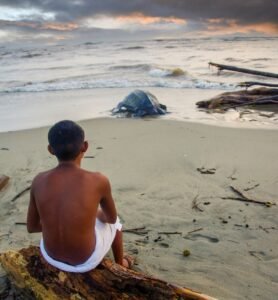
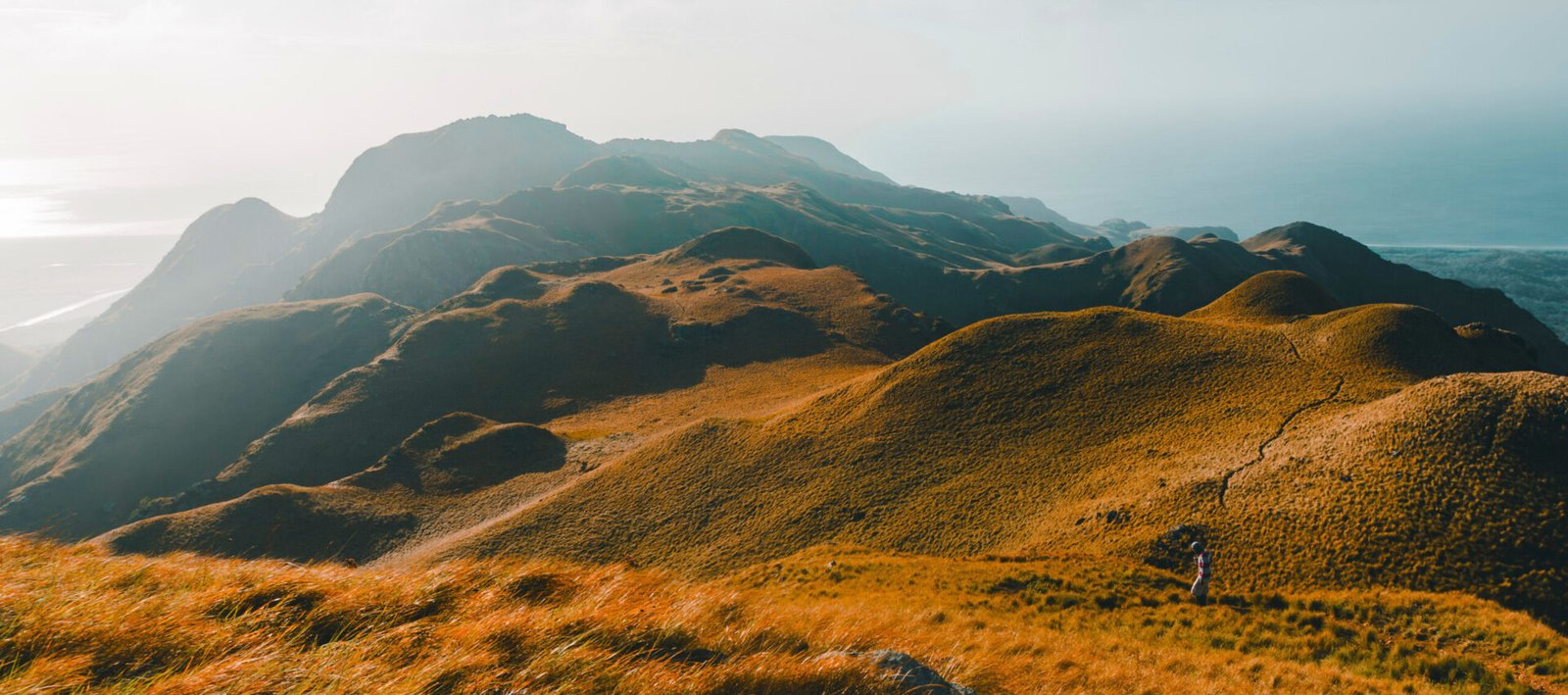

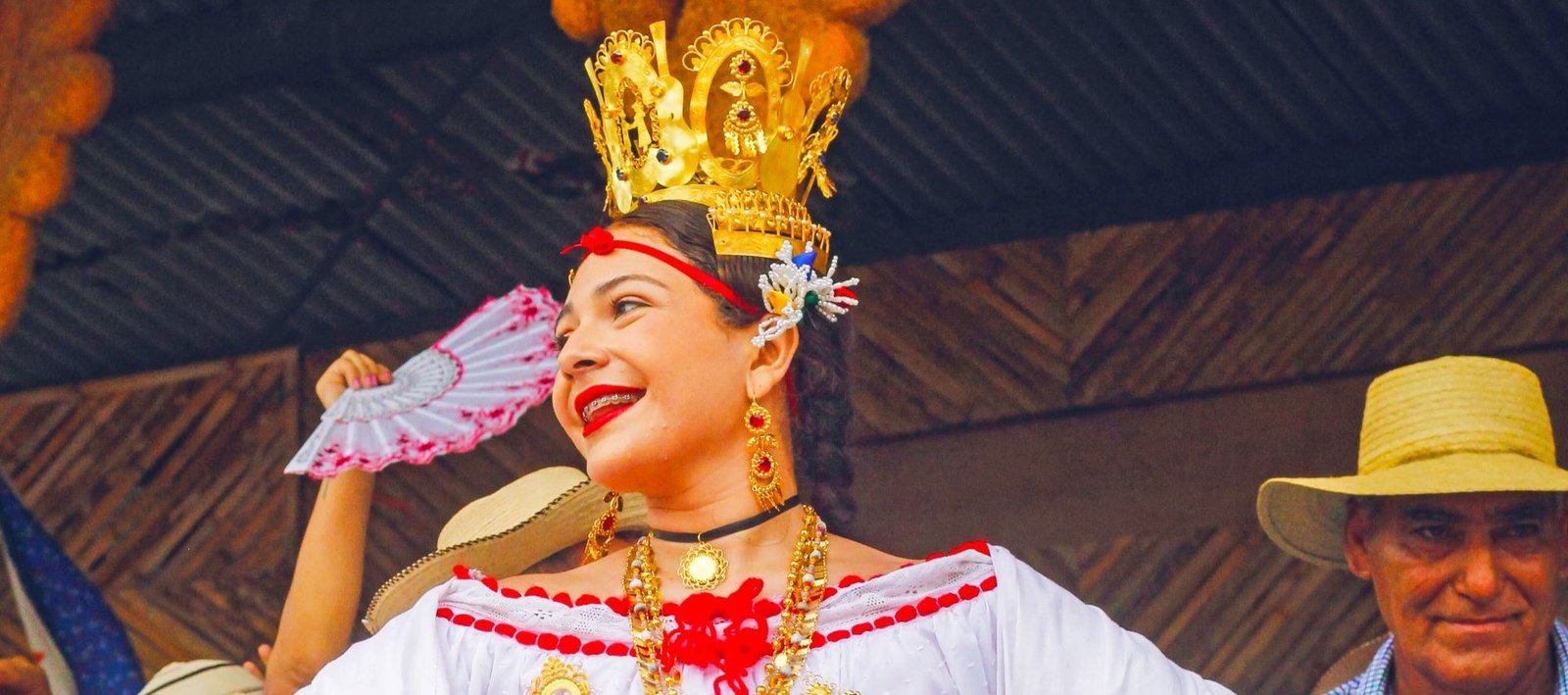
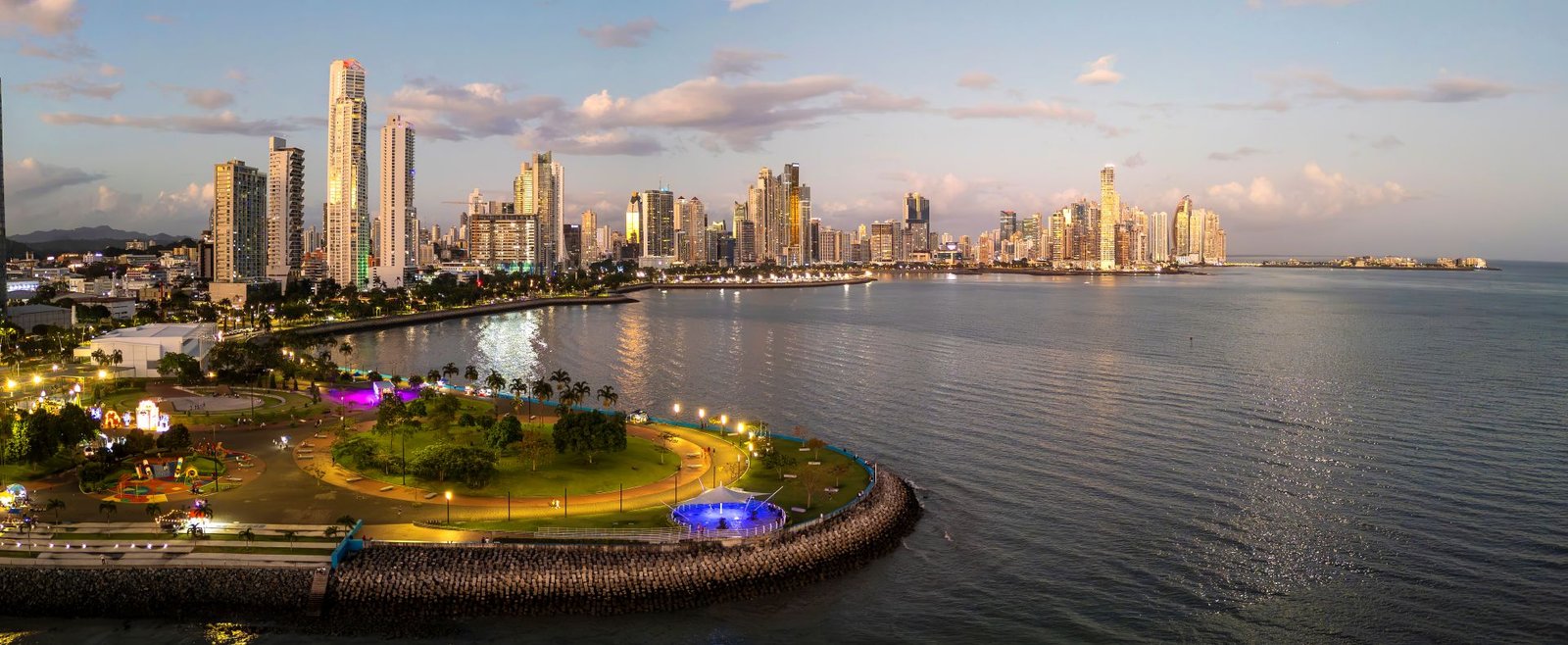
Leave a Reply